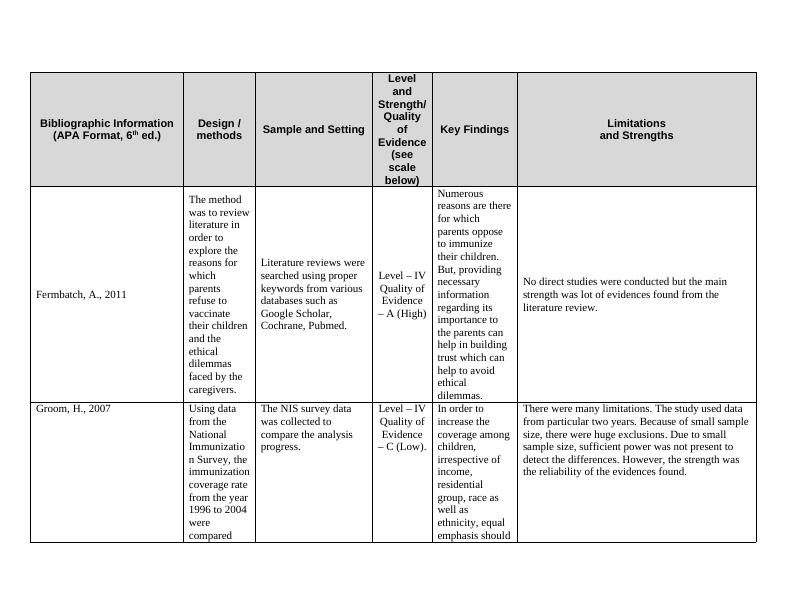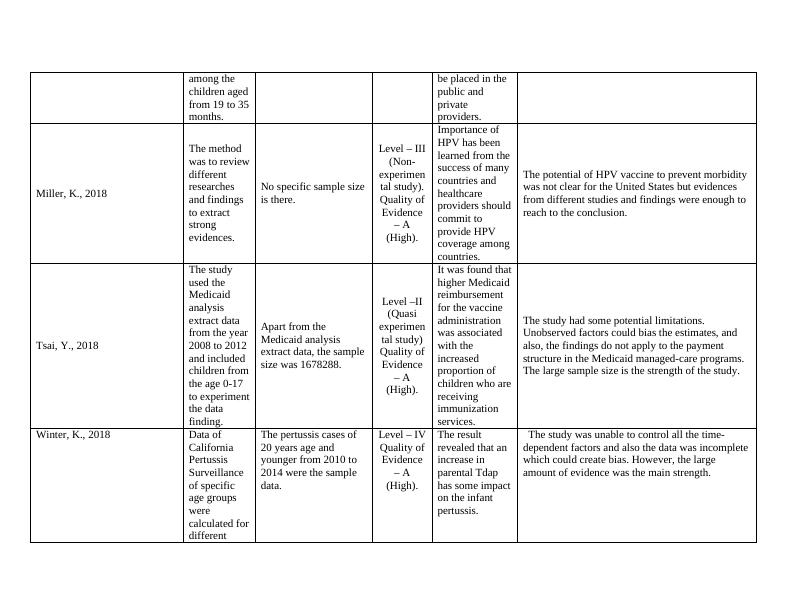Literature Review on Ethical Dilemmas in Childhood Immunization
Comparing pertussis incidence in California in 2010 and 2014 to analyze the impact of vaccination policy changes on disease burden.
5 Pages1591 Words449 Views
Added on 2022-11-29
About This Document
This literature review examines the reasons for parents refusing childhood immunization and the ethical dilemmas faced by healthcare providers. The review explores key findings from various studies and discusses the limitations of each study. The literature supports the problem statement and provides valuable insights for future research.
Literature Review on Ethical Dilemmas in Childhood Immunization
Comparing pertussis incidence in California in 2010 and 2014 to analyze the impact of vaccination policy changes on disease burden.
Added on 2022-11-29
ShareRelated Documents
End of preview
Want to access all the pages? Upload your documents or become a member.
Factors Influencing Parental Decisions about HPV Vaccination
|55
|10165
|73
Understanding Pertussis and the Role of Immunization
|5
|875
|86
Interventions for Improving Childhood Immunization Coverage in Middle and Low Income Countries
|9
|2255
|247
Immunization against Whooping Cough and Measles in Australian Children
|6
|1527
|95
Theory and Practice in Language Studies - PDF
|9
|1944
|70
Effect of Influenza Vaccine on Contracting Pneumonia in Older Adults
|15
|1008
|378


